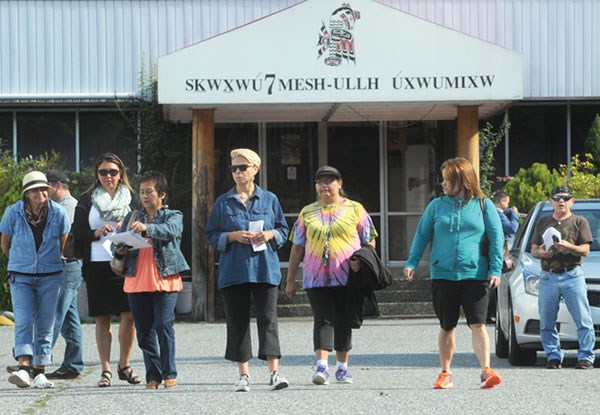As a political entity, the Squamish Nation operates in ways that are far different from municipal government.
We learned last month that the Squamish Nation and one of its key managers, Krisandra Jacobs, have parted ways in the shadow of an independent investigation into the way emergency funds were disbursed. A Sept. 23 update to the Squamish Nation members reported the band manager’s relationship with the Squamish Nation is under review, also in connection with the disbursement of emergency funds. The band manager position is an elected post. Glen Newman was re-elected to the position in the most recent Squamish Nation elections.
There is one key difference between the way the Squamish Nation is run compared to municipal governments like the District of Squamish. Municipal employees are not eligible to be elected to municipal council. A number of the elected members of Squamish Nation Chiefs and Council are also employees of the Squamish Nation.
This means there are elected Squamish Nation officials who are employees of the very organization they help run.
Jacobs, the former manager of communications and band services, wore an employee hat and an elected official hat. She worked for the organization while also serving as an elected member of Chiefs and Councils. There’s no indication of whether she quit or was forced out of her employment position. Jacobs still holds her elected position and she is the Squamish Nation Council co-chair, a position she shares with Ts’élkwílem Siýam (councillor Byron Joseph).
Reached on Friday, Oct. 3, Jacobs was offered an opportunity to discuss what has happened. She didn’t want to talk.
The notice to Squamish Nation members indicates the Chiefs and Council will meet on Saturday (Oct. 18) then provide Squamish Nation members with a summary of the facts found in the investigation. Also during that meeting, the Chiefs and Council plan to share any decisions made respecting the positions of elected officials.
Ahead of those dates, Jacobs and Newman were given an opportunity to meet with the Chiefs and Council to provide any additional information they may want to provide.
There is no information indicating the Nation employs Newman.
Verifying this and other details related to this issue is very difficult because getting someone from the Squamish Nation to talk about anything related to governance issues is nearly impossible. Following the Chiefs and Council elections in December of last year, a request was submitted to Jacobs asking for an interview with a Squamish Nation spokesperson to discuss the election results. The request wasn’t even acknowledged.
The results of the 2013 election were significant. Chief Gibby Jacob, who had been an elected member of Chiefs and Council for three decades, was not re-elected. Jacob was the face of the Squamish Nation. During the Olympic Winter Games in 2010 he was the main Squamish Nation spokesperson.
In 2005 Jacob was given the title of executive operating officer, a position he continues to hold today, according to his LinkedIn profile.
Jacob is now “just” an employee. But, he also carries the title of Hereditary Chief. It is reasonable for Squamish Nation members, and everyone else, to get a full understanding of the role Jacob now plays within the Squamish Nation.
It’s interesting to note that the Sept. 23 update to Squamish Nation members is signed by all but two members of the Squamish Nation Chiefs and Council.
Xwélxwelacha Siyam (Chief Richard Williams) and Jacobs didn’t sign the update to members.
Business in Vancouver reported late this fall that taxpayers contributed $13,940,533 for various Squamish Nation programs in the year that ended March 31, 2013. According to Aboriginal Affairs and Northern Development, the Squamish Nation has received almost $40 million in federal funding during the three most recently reported fiscal years.
The way the Squamish Nation spends its money should be of interest to its 4,000 members. It should also be of interest to the rest of the population, because our taxes paid by regular Canadians flow into the Squamish Nation coffers.




